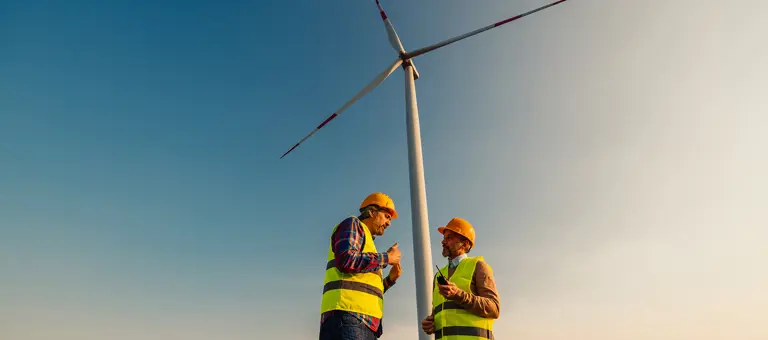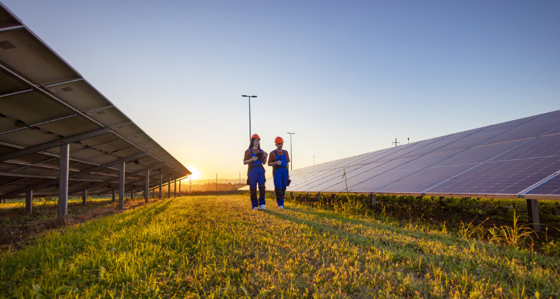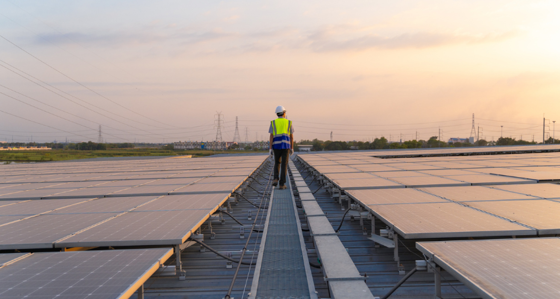
US offshore wind – the year ahead
7 March 2023
Clear policy commitments from the Biden administration in 2022 have helped to stoke interest in the US’s rapidly developing offshore wind industry. The experience from recent projects and auction processes provides interesting learnings for the future, although these vary on a State-by-State basis. We look at what lies in store for 2023.
During our US Offshore wind webinar, Baringa’s US Energy Markets Advisory team and transatlantic offshore wind experts shared their analysis on what may be in store for US offshore wind in the year ahead.
Below, we summarise some of the key points from the live discussion.
Host:
Tom Harper, Director, Baringa (NY)
Speakers:
John Baron, Senior Consultant, Baringa (NY)
Manon Derelle, Senior Manager, Baringa (UK)
Cailin Hoffmann, Consultant, Baringa (UK)
US policy context: greater certainty & ambition
2022 began with significant policy uncertainty with the Build Back Better bill stalling, and the expiry of key tax credits drawing nearer. This uncertainty was swept away in the summer of 2022 with the passage of the Inflation Reduction Act (IRA). The IRA provides greater levels a of tax credits and longer forward certainty for project developers which, together with state level support, underpins the role that offshore wind will play in decarbonizing the power sector.
The current level of ambition is enormous, with a federal target of 30GW of projects by 2030. So far, nine states have set targets for offshore wind. New Jersey and the Northeast US lead the way in the near term, but California sets the medium-term pace, with a goal of 25GW of offshore wind by 2045.
In addition, the federal Investment Tax Credit can effectively offset 40% of a project’s capex. With this massive subsidy and States providing support in the form of 20 year offtake contracts set at above market prices, offshore wind projects see a profitable road ahead of them.
The Inflation Reduction Act and other incentives, have also turbo-charged the supply chain, with OEMs and private equity investors launching into the market or increasing investment in existing sites.
Given this level of support and momentum for developers and the supply chain, offshore wind is certain to be a key pillar of the US decarbonization story.
Key players & regions
The main players in the US offshore wind space are a mix of utilities, oil & gas companies, and financial sponsors. Given the capital intensity of projects, we do not see smaller specialist offshore-wind developers. Joint ventures are increasingly common, given their ability to diversify risk and bring different strengths together across offshore wind development, grid, and supply chain. Players include European household names, as well as an uptick in projects with US-based companies.
Geographically, the Northeast is the most mature US region for offshore wind, with New Jersey, New York and Massachusetts leading the way with projects and robust pipelines. However, recent seabed auctions in the Carolinas, California and upcoming auctions in the Gulf of Mexico and Oregon mean we will now see that experience expand rapidly to other regions.
State support: varied approaches
In the Webinar, Baringa shared scenario analysis of subsidy cost with varying levels of Investment Tax Credits (which have been extended through at least 2033 via the IRA).
Precise support mechanisms are already defined in some states but remain to be seen in states like Delaware or California. Those that are in place largely follow the European ‘contracts-for-difference’ approach, where projects receive a fixed payment per MWh generated.
However, there are notable variances between such contracts (ORECs, PPAs), such as:
- New York’s scheme indexes the value of the subsidy to a zonal energy price, leaving the project with basis risk
- Maryland, where policy is governed by regulation rather than contract, introducing some regulatory risk
- The level of inflation indexation, with various States introducing index payments to provide developers with an inflation hedge.
- The way transmission is reflected into PPAs – but it appears increasingly the case that developers are liable for interconnection costs.
Transmission of offshore power to land presents a major coordination challenge and opportunity. New Jersey is the front-runner state in this regard, and its approach – of socialising the initial upfront cost for better co-ordination and future efficiency gains – may set an important precedent. Other interesting approaches are under consideration, including the potential for an offshore bootstrap in California to alleviate the burden to the onshore grid.
Supply chain: constraints
We see supply chain constraints as a potential impediment to hitting the federal 30GW target by 2030. However, a combination of subsidies and the clear runway of lease areas provided by the Bureau of Ocean Energy Management (BOEM) will help to increase certainty and investor confidence in building out the necessary support infrastructure.
Recent auction outcomes
In 2022, BOEM tendered nearly 13GW of offshore wind capacity in across three tenders, starting with auction off site on the East coast – NY Bight and Carolina Long Bay, and ending the year with the first West coast auction in California.
Early in the year BOEM held the NY Bight tender, auctioning six leases off the coast of NY and NJ adjacent to a sizeable capacity of offshore wind projects under various stages of development. This was the first auction since 2018 and the largest capacity to be tendered in US auction, garnering significant interest from international competitors and leading to recording breaking leasing prices for the region.
Second in the year was the Carolina Long Bay auction, which auctioned off a smaller capacity in a less mature offshore wind region driving lower competition and auction revenues.
At the end of the year, BOEM held the California tender which was both the first US West coast process and the first floating offshore wind lease auction in the US. The auction set high valuations for floating wind lease areas in contrast to the auction outcomes most recently seen from the UK Scotwind leasing process. However, we note that competition was relatively limited compared to initial stated developer interest, likely due to the risk relating to a nascent technology in a market with unresolved offtake and grid issues. The California tender outcomes may nonetheless establish a benchmark in terms of developer interest for future floating wind tenders expected in the year ahead.
Valuation differentials in the seabed sites are typically a function of auction design, presence off-take mechanisms and state supporting policies, local supply chain and infrastructure availability, as well as the use of fixed or floating technologies – the latter a necessity in the deep waters off the Californian seaboard. Additionally, the US offshore wind development regime has a relatively decentralised approach compared with the more centrally planned approach seen in Europe which also drives differences in perceived developer risk throughout the offshore wind development.
As such a result, we have seen a mixture of auction outcomes based on the fundamentals in each market, with regions in various stages of offshore wind development and maturity.
Outlook: hot market with shifting dynamics
We expect the US to continue to be a hot market for offshore wind, and it is likely to be in the top 3 globally, by installed capacity, in the next decade - along with China and the UK.
While the past decade has seen significant cost reduction for US offshore wind, we may see a flattening or even reversal of this trend given constraints around supply chains, inflationary pressures and grid integration requirements.
With increased scrutiny around high seabed prices and potential pass-on to consumers at the OREC/PPA stage, it seems likely that these have now peaked at the level set by the NY Bight tender.
In addition, as the market matures, we expect to see a continued shift from purely economic considerations and towards qualitative criteria in auctions, relating to aspects such as supply chain development, local workforce training, grid integration solutions and environmental considerations. This is already something BOEM has incorporated into its seabed lease auction parameters, and we expect this this to the wider economic considerations for offshore wind to gain momentum in the coming years.
To learn more about our transaction due diligence and commercial advisory services please contact Tom Harper.
Related Insights

Dissecting the REMA decision
Three years in the making, the Review of Electricity Market Arrangements (REMA) decision has now been published: the UK Government has decided to retain the national wholesale price.
Read more
What might a reformed GB national power market look like under REMA?
Discover how a reformed national market is likely to include significant changes to current market arrangements, with material impacts for market participants.
Read more
Investing in uncertainty: European power market outlook 2025
Our latest outlook points to a more uncertain energy transition, shaped by political and economic volatility across Europe in the form of Trade Wars, Populism and Remilitarisation.
Read more
REMA and investing in GB power market under uncertainty
Learn about the opportunities and challenges of investing in the GB power market under uncertainty and how Baringa can help
Read moreIs digital and AI delivering what your business needs?
Digital and AI can solve your toughest challenges and elevate your business performance. But success isn’t always straightforward. Where can you unlock opportunity? And what does it take to set the foundation for lasting success?